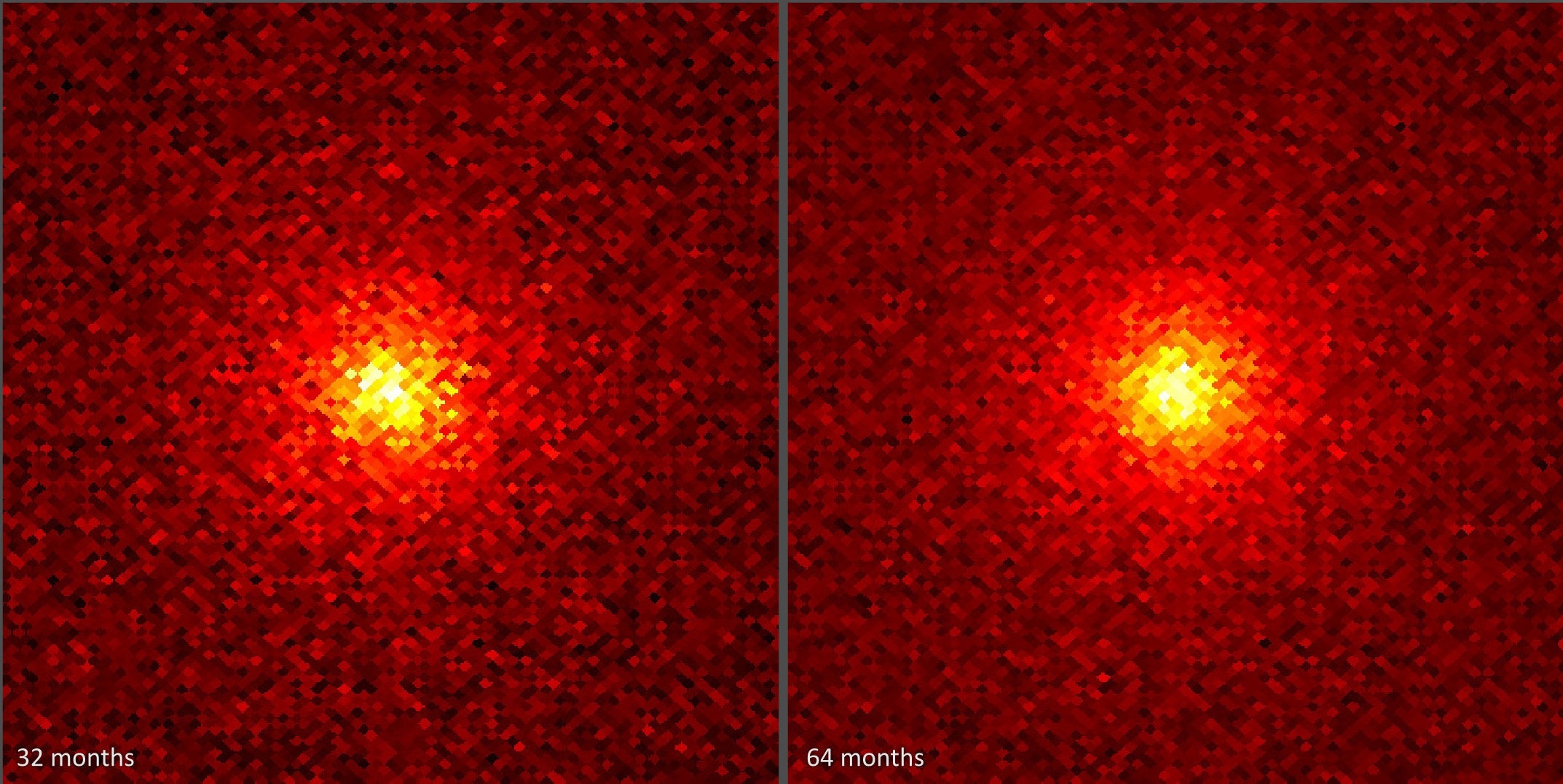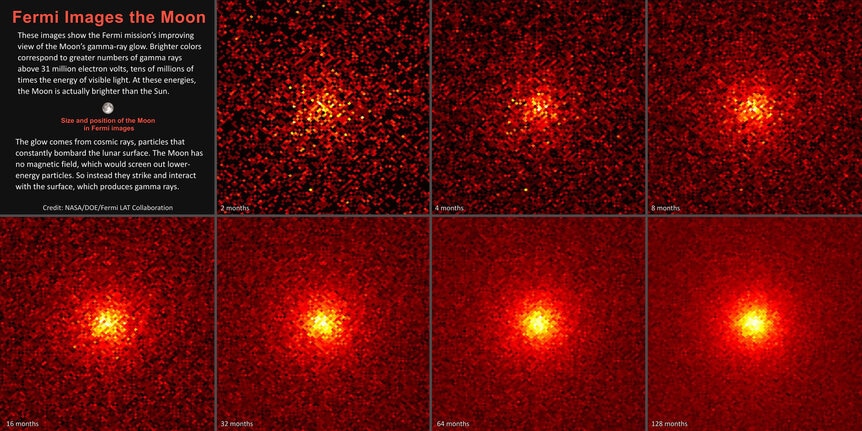Create a free profile to get unlimited access to exclusive videos, sweepstakes, and more!
The Moon is brighter than the Sun … in gamma rays

The Sun, obviously, is the brightest source of light in the sky.
Right? Right?
Well now, that depends on what you mean by "light." Usually — colloquially, and even to an astronomer if they're not too pedantic — when you just say "light" you mean "visible light," the kind of light we see. But from blue to red is a very narrow slice of a much larger spectrum of light, literally called the electromagnetic spectrum. It includes radio waves, microwaves, infrared, visible light, ultraviolet, X-rays, and gamma rays. What we think of as colors are really just different wavelengths (or energies) of light, and that goes well beyond what our eyes are sensitive to.
That's a big reason we build telescopes. We can outfit them with detectors that are sensitive to these different types of light, and they in turn tell us what the Universe is like at these wavelengths, revealing otherwise-unseen objects and sources of energy.
At most of these wavelengths, the Sun dominates. That's because it's close to us! Lots of things are more luminous, give off more energy, but they're so far away the Sun dominates.
The Moon is even closer to us than the Sun, but we see it because it reflects the light from the Sun to us, so across the electromagnetic spectrum it's a lot fainter (in visible light, the Sun is roughly 200,000 times brighter than the Moon).
But if you look in gamma rays, that changes.
Gamma rays are at the highest end of the spectral scale, but they cover a broad range of energies. The lower limit isn't well defined, but is around 2 million times the energy of the light we see (at these energies, astronomers and physicists like to use an energy unit called an electron-Volt (or eV); visible light has an energy of roughly half an eV, and gamma rays start around a million eV (also called a mega-electron-Volt or MeV)).
Gamma rays don't penetrate our atmosphere, so we launch space telescopes to see them coming from cosmic objects. The Fermi Gamma-ray Space Telescope is a very sophisticated observatory, capable of seeing these high-energy photons — it can even tag them by the time each one is received and how much energy the gamma ray had. Fermi has observed much of the sky, and sometimes the Moon is in its field of view. So some astronomers went into the database and looked at all the gamma rays seen coming from the Moon that are above about 30 MeV, and it found the Moon is actually brighter at those energies than the Sun!
Gamma rays are only produced by extremely high-energy events, though, like exploding stars and black holes gobbling down matter, and places where there are extremely strong magnetic fields. The Moon is basically a big ol' rock in space, with no magnetic field to speak of and certainly not enough energy to make gamma rays. So where do they come from?
Cosmic rays! These are subatomic particles zipping through space at very near the speed of light, accelerated by many of those same phenomena that make gamma rays (a big source are subatomic particles slammed around by shock waves from an exploding star or gas blasted from galaxy nuclei; as they bounce back and forth they gain incredible energies and shoot away at near light-speed). These travel across the galaxy and then slam into the Moon's surface. So much energy is deposited by this that the nuclei in the atoms on the Moon's surface get energized, and relieve that excitement by sending out gamma rays.
That's what Fermi is detecting. In the images above, Fermi lacks the resolution to see any features on the Moon, so it just sees a fuzzy glow. At short exposures it's hard to even see the Moon's shape at all, but by adding together more and more gamma ray observations (essentially creating a longer exposure after the fact) it becomes more clear.
That's cool. And this isn't just for grins; a sensitive gamma-ray detector orbiting the Moon can be used to map the elements on the surface; different elements emit gamma rays at different energies, so they can be distinguished this way. Lunar Prospector, which orbited the Moon for about a year, had such a device on it.
By the way, if you look at much higher energy gamma rays, like above a billion eV (GeV), the Sun once again dominates the Moon. The source is the same: Extremely energetic cosmic rays hitting the solar atmosphere. The Sun has a decent magnetic field which protects it from some cosmic rays, but ones with really higher energy get through — that's why we see much higher energy gamma rays from the Sun.
From the Earth, at least, the Sun tends to win contests like this.
Gamma rays are amazing. They can make stars explode. They create antimatter. And, in some cases, they can make our big gray satellite positively glow.



























